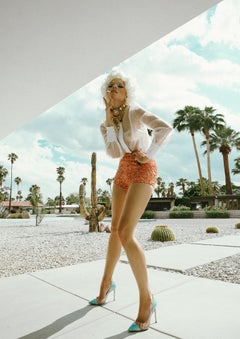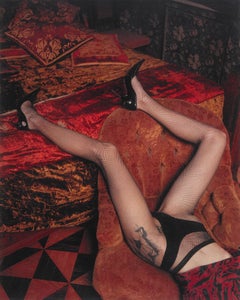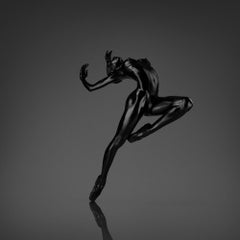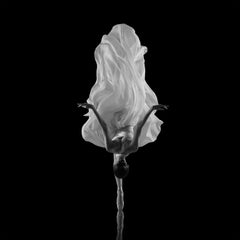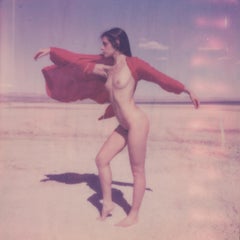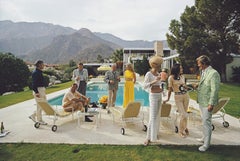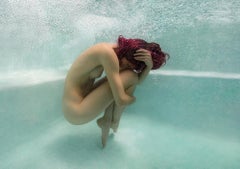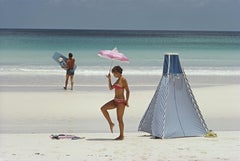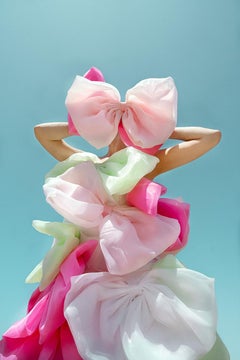Figurative Photography
2010s Contemporary Figurative Photography
Photographic Paper, Polaroid, Color, C Print, Archival Paper
1960s Modern Figurative Photography
Silver Gelatin
20th Century American Modern Figurative Photography
C Print, Photographic Paper, Color
2010s Contemporary Figurative Photography
Archival Paper, Archival Pigment
1960s Realist Figurative Photography
Lambda
2010s Figurative Photography
Photographic Paper
Early 2000s Contemporary Figurative Photography
Archival Paper, Photographic Paper, C Print, Color, Polaroid
1950s Modern Figurative Photography
Archival Pigment
1980s Modern Figurative Photography
Archival Pigment
2010s Contemporary Figurative Photography
Archival Paper, Archival Pigment, Digital Pigment
1970s Modern Figurative Photography
Archival Pigment
1990s Contemporary Figurative Photography
Platinum
1970s Modern Figurative Photography
Archival Pigment
2010s Contemporary Figurative Photography
Archival Paper, C Print, Color, Polaroid, Photographic Paper
Early 2000s Contemporary Figurative Photography
Photographic Paper, C Print, Color, Silver Gelatin
1970s Modern Figurative Photography
Archival Pigment
1990s Contemporary Figurative Photography
Photographic Paper, C Print, Color, Polaroid
1960s Modern Figurative Photography
Archival Pigment
1970s Realist Figurative Photography
Lambda
1960s Modern Figurative Photography
Archival Pigment
2010s Modern Figurative Photography
Archival Pigment
2010s Figurative Photography
Photographic Paper
1990s Modern Figurative Photography
C Print
2010s Contemporary Figurative Photography
Plexiglass
1970s Modern Figurative Photography
Archival Pigment
1950s Photorealist Figurative Photography
Photographic Paper, Silver Gelatin
2010s Figurative Photography
Pigment
Early 2000s Modern Figurative Photography
Archival Paper, Black and White, Pigment, Archival Pigment
1960s Contemporary Figurative Photography
Photographic Film, Archival Ink, Archival Paper, Digital, Archival Pigme...
Early 2000s Contemporary Figurative Photography
Photographic Paper, C Print, Color, Silver Gelatin
1980s Modern Figurative Photography
C Print
1980s Street Art Figurative Photography
Archival Pigment
Early 2000s Contemporary Figurative Photography
Archival Paper, Photographic Paper, C Print, Color, Polaroid
2010s Photorealist Figurative Photography
Archival Pigment
2010s Modern Figurative Photography
C Print
1930s Modern Figurative Photography
Black and White, Silver Gelatin
1970s Modern Figurative Photography
Color, Archival Pigment
1960s Modern Figurative Photography
Archival Pigment
1950s Modern Figurative Photography
Color, Archival Pigment
1970s Realist Figurative Photography
Lambda
1960s Modern Figurative Photography
C Print
1980s Contemporary Figurative Photography
Silver Gelatin, Photographic Film, Photographic Paper
Early 2000s Contemporary Figurative Photography
Photographic Paper, C Print, Color, Silver Gelatin
1950s Modern Figurative Photography
Photographic Paper
21st Century and Contemporary Contemporary Figurative Photography
Photographic Paper, C Print, Color, Silver Gelatin
2010s Contemporary Figurative Photography
Archival Pigment
2010s Surrealist Figurative Photography
Black and White, Archival Pigment
1950s Modern Figurative Photography
Black and White, Archival Pigment
1990s Modern Figurative Photography
Photographic Film, Archival Paper, Photographic Paper, Black and White, ...
1960s Modern Figurative Photography
Archival Pigment
1950s Modern Figurative Photography
Archival Pigment
2010s Contemporary Figurative Photography
Archival Ink, Archival Paper
21st Century and Contemporary Modern Figurative Photography
C Print, Black and White
2010s Contemporary Figurative Photography
Archival Paper, C Print, Color, Polaroid
1960s Modern Figurative Photography
Archival Pigment
Early 2000s Contemporary Figurative Photography
Photographic Paper, C Print, Color, Silver Gelatin
Early 2000s Modern Figurative Photography
C Print
1980s Contemporary Figurative Photography
Photographic Film, Archival Paper, Photographic Paper, Black and White, ...
2010s Figurative Photography
Photographic Paper
2010s Contemporary Figurative Photography
Archival Paper, Archival Pigment
Find Figurative Photography for Your Home or Office
Life becomes art in figurative photography. Shared moments are captured and history is recorded in images of people and their lives.
Figurative photography is often used to describe a kind of photography in which people are the subject. Early black and white photography of people can be a glimpse into a past century — witness the celebrated work of photographers such as Ansel Adams or lesser-known artists like Berenice Abbott, for example. The cultural and social standards of the time are captured in these figurative photographs.
Mid-century photos might show the life and fashions of the day, sometimes with the shared thread of humanity, joy and love. Indeed, figurative photographs can be a source of inspiration and wonder, speaking of common life experiences and beauty. Vintage photos of celebrities and iconic actors can be valuable keepsakes as snapshots of a bygone era.
Just as if you were bringing paintings, prints or drawings into your space as part of the decor, there are many ways to arrange your figurative photography. Large photos can be statement pieces in a room. Smaller photographs can be placed on bookcases or on compact wall spaces to add an artistic element to a living room or a bedroom.
Find a collection of figurative photography on 1stDibs today.
